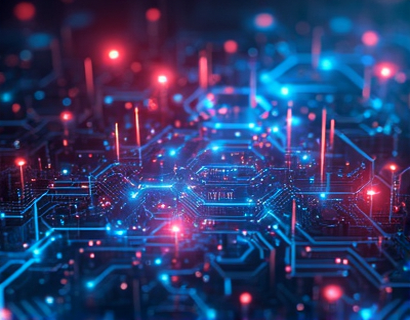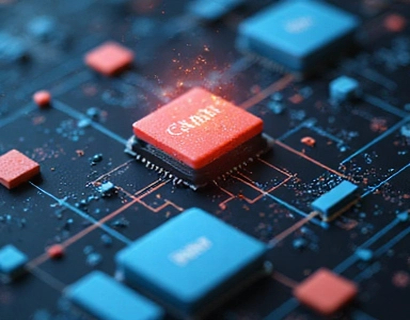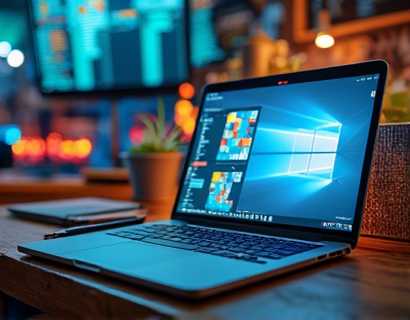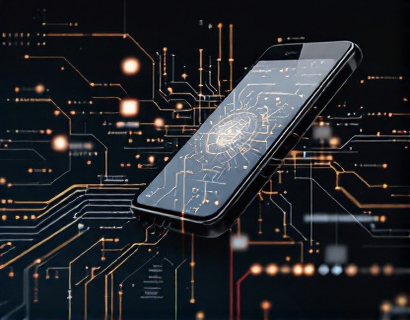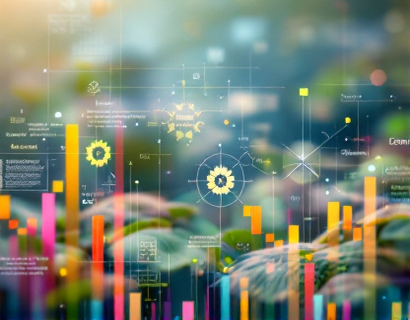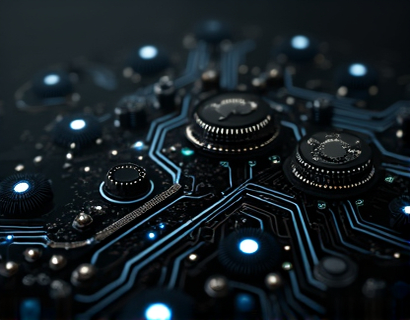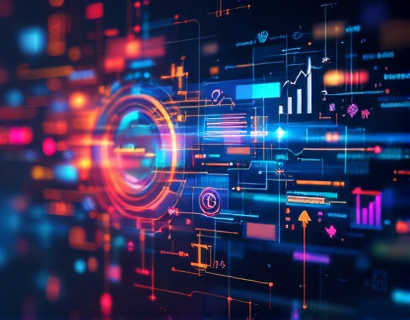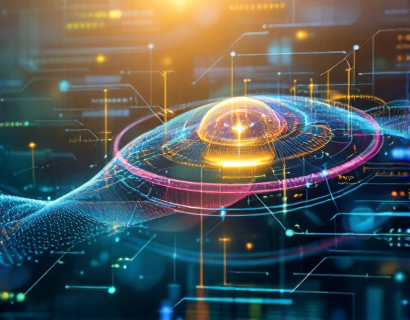Revolutionizing Digital Experiences: The Synergy of Crypto and AI
The intersection of cryptocurrency and artificial intelligence (AI) is giving rise to a new era of digital innovation, one that promises to redefine user interactions and experiences. This convergence is not just a technological curiosity but a transformative force that is reshaping how we engage with digital platforms and services. For tech-savvy innovators and early adopters, understanding this synergy is crucial to staying ahead in a rapidly evolving landscape.
The integration of AI into cryptocurrency solutions is creating smarter, more efficient, and user-friendly systems. AI algorithms can analyze vast amounts of data to optimize blockchain transactions, enhance security measures, and improve user interface designs. This article explores the multifaceted ways in which AI and crypto are combining to revolutionize digital experiences, offering insights and guidance for those eager to explore this cutting-edge frontier.
Enhanced Security Through AI
One of the most significant benefits of combining AI with cryptocurrency is the enhancement of security protocols. Traditional blockchain systems rely on cryptographic algorithms to secure transactions, but the addition of AI can take this to the next level. AI-driven systems can detect and respond to potential threats in real-time, identifying patterns that may indicate fraudulent activity or security breaches.
Machine learning models can be trained to recognize anomalies in transaction data, allowing for proactive measures to be taken before any damage occurs. This not only protects users' assets but also builds trust in the cryptocurrency ecosystem. For tech enthusiasts, this means a more secure environment for conducting financial transactions and storing value.
Smart Contracts and AI Optimization
Smart contracts, self-executing contracts with the terms directly written into code, are a cornerstone of blockchain technology. AI can further optimize these contracts by automating complex decision-making processes and ensuring that all conditions are met efficiently. AI algorithms can analyze the context and variables involved in a smart contract, adjusting parameters in real-time to optimize outcomes.
For instance, in decentralized finance (DeFi) applications, AI can help manage risk by dynamically adjusting interest rates, loan terms, and other financial parameters based on market conditions. This level of automation and intelligence not only streamlines processes but also reduces the potential for human error, making smart contracts more reliable and efficient.
Personalized User Experiences
AI's ability to process and analyze vast amounts of data makes it an ideal tool for creating personalized user experiences. In the context of cryptocurrency and digital services, AI can tailor recommendations, interfaces, and functionalities to individual user preferences and behaviors. This personalization enhances user engagement and satisfaction, making digital platforms more intuitive and user-friendly.
For example, a crypto exchange powered by AI can analyze a user's trading history and behavior to suggest optimal trading strategies, alert them to potential opportunities, and even automate certain trades based on predefined criteria. This level of personalization is particularly valuable for tech-savvy users who seek a more customized and efficient experience.
Improved User Interface and Experience Design
The integration of AI in UI/UX design for cryptocurrency platforms is leading to more intuitive and visually appealing interfaces. AI algorithms can analyze user interactions and feedback to continuously refine and improve the user experience. This includes optimizing layout, navigation, and visual elements to ensure that users can easily access and utilize the platform's features.
Moreover, AI-powered chatbots and virtual assistants can provide real-time support and guidance, answering queries and assisting users with complex tasks. These AI-driven tools not only enhance the user experience but also reduce the workload on human support teams, making the service more scalable and efficient.
Decentralized AI Models
Another exciting development at the intersection of AI and cryptocurrency is the creation of decentralized AI models. These models leverage blockchain technology to distribute AI computations across a network of nodes, ensuring that no single entity has control over the entire system. This decentralization enhances privacy and security, as sensitive data is not stored in a central location and is instead encrypted and distributed.
Decentralized AI models can also promote fairness and transparency by allowing multiple parties to contribute to the training and validation of AI algorithms. This collaborative approach can lead to more robust and unbiased AI systems, which is particularly important in financial and regulatory contexts.
Tokenization of AI Assets
The tokenization of AI assets is another innovative application of blockchain technology in the AI domain. By representing AI models, data sets, and computational resources as tokens on a blockchain, these assets can be bought, sold, and traded like any other cryptocurrency. This tokenization opens up new opportunities for monetizing AI technologies and fostering a more dynamic and accessible AI ecosystem.
For tech innovators, this means greater flexibility in acquiring and utilizing AI resources. Developers can access high-quality AI models and data sets through tokenized marketplaces, reducing barriers to entry and accelerating the development of new applications and services. This democratization of AI assets is poised to drive significant advancements in various industries.
Challenges and Considerations
While the convergence of AI and cryptocurrency offers numerous benefits, it also presents several challenges that must be addressed. One of the primary concerns is the regulatory landscape. The combination of cryptocurrencies and AI falls into a gray area where existing regulations may not fully apply or may be overly restrictive. Navigating this regulatory environment requires careful consideration and proactive engagement with policymakers.
Another challenge is the technical complexity involved in integrating AI with blockchain systems. Developing robust and scalable solutions that can handle the computational demands of both AI and blockchain requires expertise in multiple domains. For tech enthusiasts, staying informed about the latest advancements and best practices in this area is essential to overcoming these technical hurdles.
Future Prospects
The future of digital experiences at the intersection of AI and cryptocurrency is bright, with numerous potential applications and innovations on the horizon. As the technology matures, we can expect to see more sophisticated AI-driven financial tools, enhanced security measures, and personalized user experiences across various platforms.
Moreover, the integration of AI with other emerging technologies, such as the Internet of Things (IoT) and quantum computing, could lead to even more transformative changes. The potential for creating seamless, secure, and intelligent digital ecosystems is vast, and those who embrace this convergence will be well-positioned to lead the way in the next generation of tech innovation.
For tech-savvy innovators and early adopters, the journey into the world of AI and cryptocurrency is both exciting and rewarding. By staying informed, embracing new technologies, and exploring the possibilities at their intersection, these individuals can not only enhance their own digital experiences but also contribute to the broader evolution of the tech landscape.




